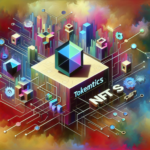The Rise of Quantum Computing
Understanding Quantum Computing
Quantum computing harnesses the principles of quantum mechanics to process information in ways that classical computers cannot. Unlike classical bits, which represent data as either 0s or 1s, quantum bits, or qubits, can exist in multiple states simultaneously. This phenomenon allows quantum computers to perform complex calculations at extraordinarily high speeds, making them powerful tools for solving particular types of problems.
Potential Threats to Cryptography
One of the most significant impacts of quantum computing is its potential to undermine current cryptographic systems. Classical encryption methods, such as RSA and ECC (Elliptic Curve Cryptography), secure most of our data, including financial transactions, communications, and identity protection. However, quantum computers, given their computational power, could crack these encryption algorithms in a fraction of the time it takes classical computers. This capability raises alarming concerns for sensitive information across various sectors.
The Role of Blockchain Technology
Understanding Blockchain Basics
Blockchain technology serves as a decentralized ledger that records transactions in a secure, immutable, and transparent manner. Each block contains a set of transactions that are cryptographically linked to the previous block, forming a chain. This design enables the tamper-resistant nature of blockchains, making them ideal for applications ranging from cryptocurrencies to supply chain management.
Current Cryptographic Techniques in Blockchain
Most blockchain systems, including Bitcoin and Ethereum, rely on established cryptographic techniques to secure their operations. The security of wallets, transaction integrity, and consensus mechanisms primarily depend on public-private key cryptography and hashing algorithms. However, as quantum computing advances, the vulnerabilities of these cryptographic methods put the entire blockchain ecosystem at risk.
Impacts of Quantum Resistance on Blockchain Technology
Transitioning to Quantum-Resistant Cryptography
With the looming threat posed by quantum computing, there’s an urgent need for blockchain networks to adopt quantum-resistant cryptographic algorithms. These algorithms are designed to withstand the capabilities of quantum computers. Examples include lattice-based cryptography, hash-based signatures, and multivariate polynomials. The transition, however, is not straightforward.
Challenges in Implementation
Switching to quantum-resistant algorithms requires significant changes to existing blockchain protocols. Upgrading the cryptographic infrastructure without disrupting current operations poses several challenges:
1. **Backwards Compatibility**: Many users still rely on existing wallets and transactions. Ensuring that these systems can work with new cryptographic standards is crucial to maintain user confidence and system integrity.
2. **Performance Metrics**: Quantum-resistant algorithms are often more resource-intensive than current methods. This increased computational load could affect transaction speeds and overall network efficiency.
3. **Standardization Across Platforms**: There’s no universal agreement on which quantum-resistant algorithms are best suited for different blockchain applications. Achieving consistency across various platforms is critical for widespread adoption.
Enhancing Trust and Security
The emergence of quantum-resistance in blockchain technology enhances trust among users. As individuals and organizations become more aware of potential quantum threats, knowing that a blockchain network is actively adopting quantum-resistant measures can instill confidence, thus encouraging utilization.
Applications Beyond Cryptocurrency
While cryptocurrency is the most recognized application of blockchain technology, many other sectors can also benefit from quantum-resistance features:
1. **Supply Chain Management**: Secure and transparent tracking of goods can be enhanced through quantum-resistant systems, reducing the risk of fraud and ensuring data integrity.
2. **Healthcare**: Protecting patient data through quantum-resistant blockchain solutions can ensure the confidentiality and security of sensitive health information.
3. **Voting Systems**: Using quantum-resistant blockchain technology in electronic voting systems can help eliminate concerns about voter fraud and tampering, fostering transparency and trust in democratic processes.
The Future Landscape of Blockchain in a Quantum Era
Ecosystem Collaboration and Education
To navigate the transition to quantum-resistance successfully, collaboration across industries and educational efforts are essential. Developers, researchers, and stakeholders need to work together not only to advance quantum-resistant technologies but also to educate users and businesses about the implications of quantum threats.
Adopting a Proactive Stance
Rather than waiting for quantum computing to reach a level where it can threaten existing systems, blockchain developers must adopt a proactive approach. This could involve:
1. **Regularly Updating Protocols**: Implementing regular assessments and updates to cryptographic standards can help ensure they remain robust against emerging threats.
2. **Investing in Research and Development**: Organizations can invest in R&D to discover new quantum-resistant algorithms and refine existing ones to enhance efficiency and security.
Creating Regulatory Frameworks
As blockchain technology evolves in the face of quantum threats, it will be essential to establish regulatory frameworks that keep pace with these advancements. Policymakers need to engage with technology experts to ensure that regulations protect users without stifling innovation.
The Importance of Community Engagement
Forums and Discussions
Engaging with the blockchain community through forums and discussions helps promote awareness about quantum threats and the importance of quantum-resistance. Initiatives such as hackathons focused on quantum-resistant solutions can inspire creativity and collaboration among developers.
Building Trust within the Community
Communication is key to building trust within the blockchain community. Sharing data about how systems are evolving to handle quantum threats can create an environment where users feel validated and informed about their digital assets.
Encouraging a Quantum-Ready Mindset
As we move into an era where quantum computing becomes mainstream, a quantum-ready mindset will be crucial. This means adopting an attitude of adaptability and foresight among developers, businesses, and users. Embracing the potential changes that quantum computing could bring to technology, including blockchain, will be very important for sustaining growth and resilience in the ecosystem.
Investing in Skills Development
A focus on skills development aimed at equipping the current and future workforce with knowledge about quantum computing and its implications for cryptography and blockchain will be vital. Educational institutions, professional organizations, and businesses can collaborate to create courses and certification programs aimed at maximizing the talent pool in this exciting and rapidly evolving field.
In summary, as quantum computing technology continues to advance, its impact on blockchain will necessitate a proactive effort to ensure that systems remain secure, resilient, and trustworthy for users worldwide. Through collaboration, education, and innovation, stakeholders can navigate this emerging landscape successfully.








